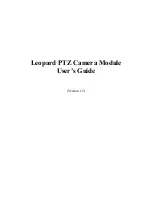
Operating the 200 Cameras for Digital Imaging and Film Photography
203
for the exposure. This is also necessary when you use any accessories such as extension tubes
without the electronic connection, with any lens, even the FE, CFE, and TCC types.
Selecting the Shutter Type
Except for fl ash photography, you are likely to use the focal plane shutter for most of your
photography. For fl ash photography, especially outdoors, the lens shutter gives you the pos-
sibility of shooting fl ash at all shutter speeds up to
1
/
500
second, an option that is extremely
helpful when fi ll fl ash is used outdoors on sunny days.
THE METERING SYSTEM
The 202 and 203 camera models have a center area metering system with the exposure based
on the light refl ected from a large center area. The 205 models have a Spot meter, where 100%
of the meter reading is based on a center area that is approximately 1% of the total image
area (Figure 12-5). Since the light is measured through the lens, the measuring angle depends
on the focal length of the lens on the camera and is about 4½ degrees with the Spot meter
and the standard 80mm lens. It becomes a 1-degree Spot meter when the reading is made
through a 350mm focal length lens. Regardless of the lens, the measured area is always seen
on the Acute Matte focusing screen, which is the main advantage for using a camera metering
system. The entire metering system is within the camera body (Figure 12-6) eliminating elec-
tronic contacts between camera and fi nder and allowing to use any viewfi nder on the camera
without losing the benefi ts of the built-in light metering system.
Turning On the Metering System
The easiest way to turn on the metering system is by pressing the AE lock on the side of the
camera (Figure 12-7), but you can also do this by pressing the front release halfway or by
pressing the pre-release control, after the darkslide is removed.
When using the AE lock to turn on the system, the light value stored in the camera from
the preceding shot is erased and metering starts from scratch. This is the logical approach
when you start taking pictures in a different light situation.
With the mode selector at D or Z the light value from the previous shot is maintained
in the camera when you depress the front release halfway, an ideal approach when you are
continuing to take pictures in the same lighting situation. It eliminates the need to take a
new reading. The EV value stays locked in the camera. You can change the aperture for the
new picture, and the shutter speed automatically adjusts to give the same exposure but only
with lenses with the electronic connection. With such lenses, you can also change lenses and
use the new lens at any aperture without the need to take a new meter reading. Keep in
mind that this applies only in the D and Z settings, a good reason to consider either one of
these modes for your photography. And it only applies if you turn on the meter with the front
release. In the A or Ab setting, the system always starts from scratch, even when turned on
with the front release. Pre-releasing the camera always locks and stores the exposure value
Summary of Contents for Digital Camera
Page 1: ......
Page 2: ...The Hasselblad Manual ...
Page 3: ...This page intentionally left blank ...
Page 13: ...This page intentionally left blank ...
Page 166: ...Heidi Niemala Photographed for clothing designer with a 150mm lens ...
Page 167: ...Heidi Niemala Editorial portrait with a 150mm lens ...
Page 168: ...Heidi Niemala Photographed with a 50mm lens during a sand storm at White Sands ...
Page 200: ...Jonathan Exley Lifestyle Designer Kathy Ireland Courtesy of kathyireland com ...
Page 244: ...Marco Grob A make up test shot made with an HC Macro 4 120mm lens on an H camera ...
Page 398: ...Close Up Photography on Film or Digital 383 ...
Page 400: ...Jonathan Singer ...
Page 401: ...Jonathan Singer ...
Page 421: ...This page intentionally left blank ...
















































